In the world of IoT development and hardware exploration, having the right tools can make a huge difference in productivity and creativity. Today, we’re comparing four impressive devices: Flipper Zero, BLE Shark Nano, M5StickC PLUS2, and LILYGO T-Embed CC1101. Each of these devices offers unique capabilities suited to different use cases, from hacking and security to IoT and communication. Let’s dive into the features, capabilities, and best use cases for each device.

What is the Flipper Zero: The Multi-Protocol ‘Swiss Army Knife’
Core Focus: A multi-protocol debugging tool designed for hardware hackers and security researchers.
The Flipper Zero is a versatile and portable multi-tool designed for hardware exploration and development on the go. Inspired by the pwnagotchi project, Flipper Zero aims to combine all the necessary tools into one compact and user-friendly device, making it the perfect companion for hardware hackers, security researchers, and DIY enthusiasts.
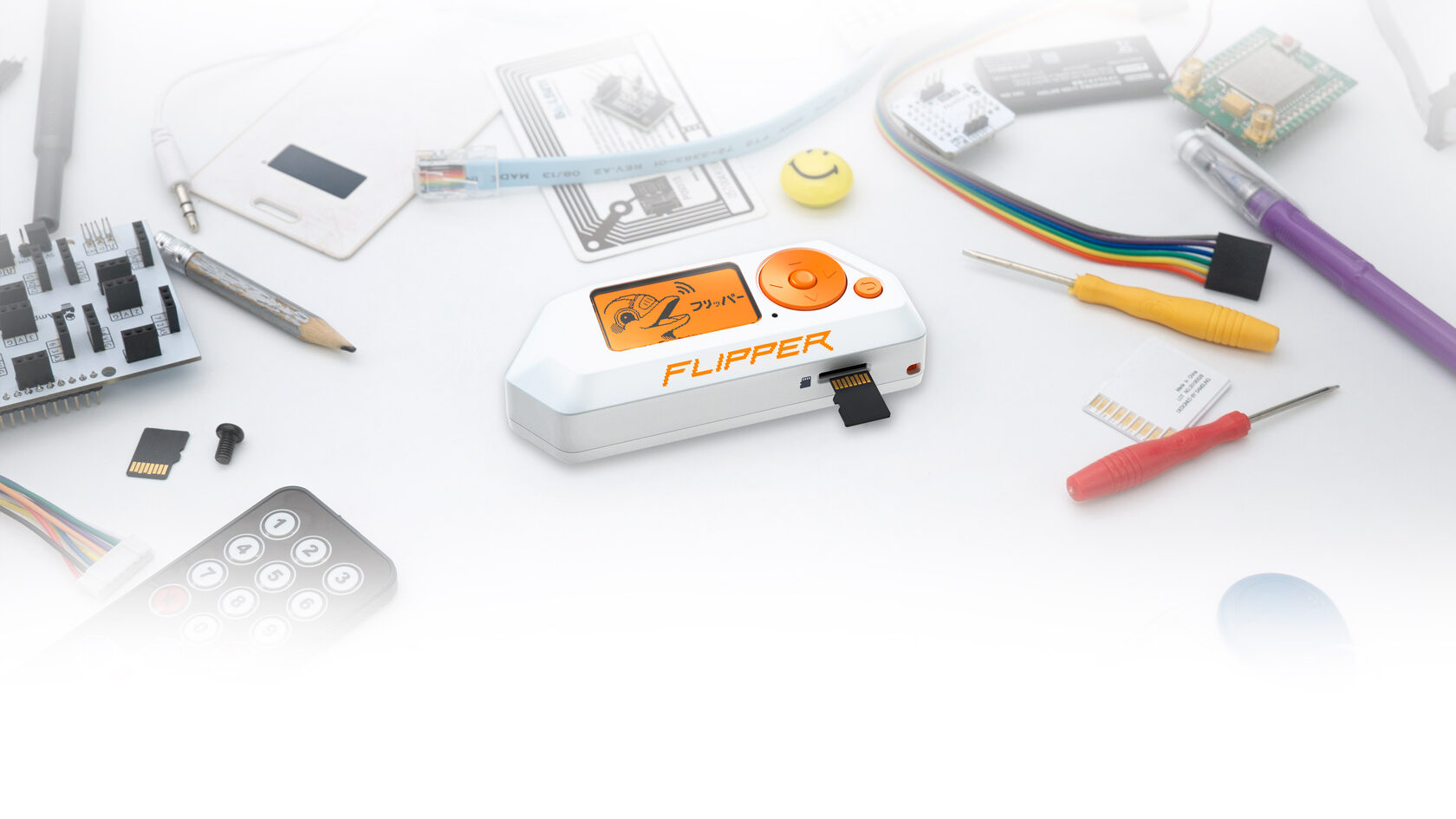
Hardware Highlights
- Main Chip: STM32WB55 (supports Bluetooth and multi-protocol communication).
- Protocol Support: Sub-GHz (315/433 MHz), RFID (low/high-frequency), NFC, IR, and GPIO expansion.
- Interaction Design: 1.4-inch monochrome LCD + 5-way button pad, inspired by retro handheld consoles.
- Expandability: Open-source firmware (rich community plugins), supports MicroSD card storage and custom scripts.
Key Features
- Main Chip: Flipper Zero is equipped with a 3.3V logic level chip with 5V tolerance for input, making it compatible with a variety of devices and systems.
- Interactive Display: It features a 1.4-inch monochrome LCD with 128x64 pixels, ultra-low power consumption, and is sunlight-readable, providing clear and crisp visuals in any environment.
- Control: The device can be controlled autonomously using a 5-button directional pad, eliminating the need for a computer or smartphone. Additional control options are available via USB and Bluetooth connections.
- Infrared Transceiver: It can interact with and control IR-based devices such as TVs, air conditioners, and more.
- GPIO Pins: Flipper Zero has GPIO pins for debugging and interacting with other hardware components, allowing for deeper exploration and customization.
- Extensibility: The device includes a MicroSD card slot for storage and a USB Type-C port for charging and firmware updates.
- Compatibility: Supports multiple protocols like RFID, Sub-GHz, and 1-Wire, allowing you to explore access control systems, wireless communication, and more.
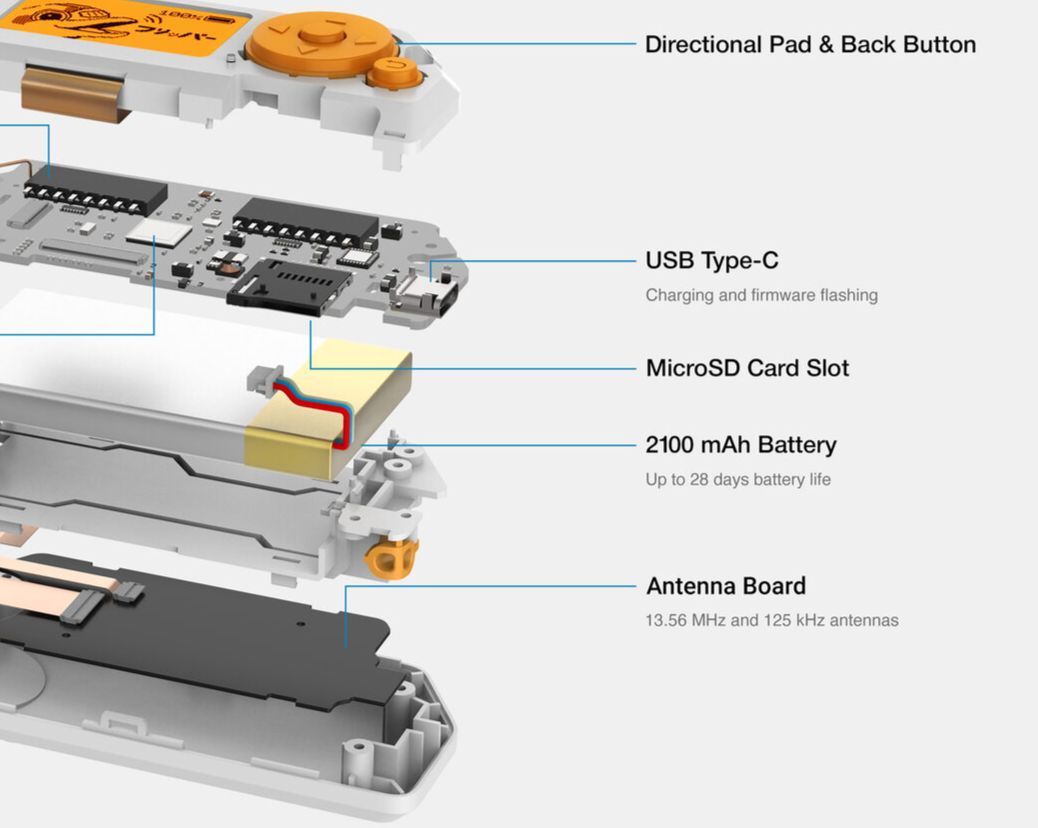
Unique Features
- Emulates access cards, replays IR signals, Sub-GHz sniffing and replay.
- Built-in ‘dolphin’ interface that gamifies hardware penetration learning.
What Makes Flipper Zero Special?
Flipper Zero stands out due to its fun and gamified approach to hardware development. With its robust case, handy buttons, and user-friendly interface, it simplifies complex tasks such as hacking and system exploration. Flipper turns the process of development into a game, encouraging users to learn while having fun.
Its autonomous design means you can take it anywhere and use it without relying on additional devices. With an easy-to-navigate interface, users can explore, test, and debug various systems in real time.
Ideal Use Cases
- Access Control System Exploration: Use Flipper Zero to interact with RFID-based systems, including keycards and tags.
- Wireless Communication Analysis: Explore and manipulate radio protocols and signals in the Sub-GHz range.
- Hardware Debugging: Leverage GPIO pins for low-level hardware interfacing, such as 1-Wire communication.
- Security Research: Conduct penetration testing on wireless systems and interact with devices using IR signals.
Flipper Zero is your cyber buddy for digital exploration, making hardware development and security testing accessible, fun, and engaging. Whether you’re a hacker, a maker, or simply someone curious about wireless technologies, Flipper Zero is an all-in-one tool to have by your side.
What is the BLE Shark Nano: The ‘Pocket Gadget’ Focused on Wireless Security
Core Focus: A low-cost, portable BLE/Wi-Fi security testing tool.
The BLEShark Nano is a compact, versatile tool designed for wireless security testing and network vulnerability assessment. Powered by the ESP32-C3 microcontroller, it specializes in Bluetooth Low Energy (BLE) and Wi-Fi security, offering various functions for penetration testing and network diagnostics.
Hardware Highlights
- Main Chip: ESP32-C3 (low-power Wi-Fi/BLE dual-mode).
- Core Features: BLE Beacon/AP Spamming, Wi-Fi Deauth Attacks, Bad-BT keyboard injection, and games like Space Invaders.
- Interaction Design: 0.66-inch OLED display + three tactile buttons.
- Battery & Design: 500mAh battery (approximately 4 hours of use), 3D printed PLA-CF case.
Key Features
- BLE Spamming & Spoofing: The BLEShark Nano allows spamming and spoofing of BLE beacons to test vulnerabilities in Bluetooth networks.
- Wi-Fi Spamming & Deauth Attacks: It can conduct Wi-Fi beacon spamming and execute deauthentication attacks to assess the security of Wi-Fi networks.
- Captive Portals & Apps: The device can create captive portals and run wireless apps, including games like Space Invaders and utilities like a TikTok scroller.
- Custom Firmware: Users can download and run third-party custom firmware, unlocking additional functionalities, such as Handshake Capturing, BadUSB, and Evil Portal Cred Detector.
- Long Battery Life: With a 500mAh battery, it can run for 4+ hours during active testing and spamming sessions.
Lorem ipsum dolor sit amet, consectetur adipiscing elit. Ut elit tellus, luctus nec ullamcorper mattis, pulvinar dapibus leo.
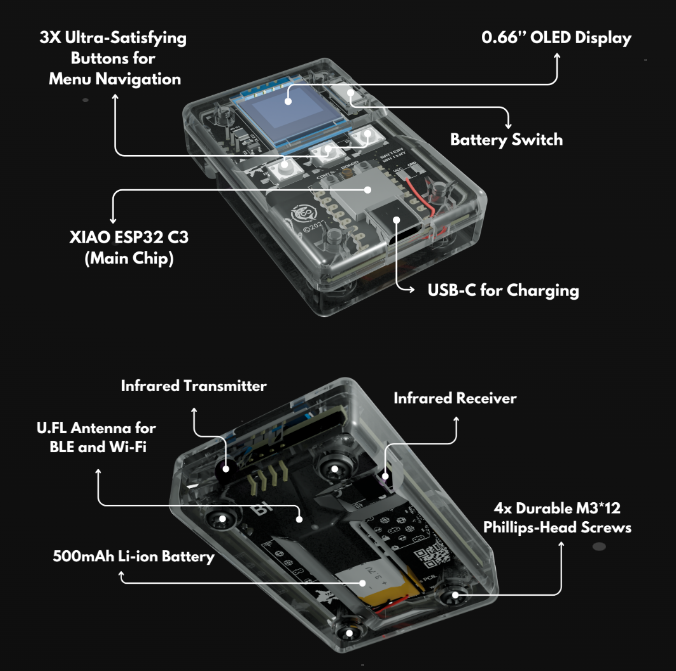
Unique Features
- Supports third-party firmware auto-update, plans to add BadUSB, handshake packet capture, and more.
- Closed-source but provides pre-configured attack scripts, lowering the barrier for wireless security learning.
Why It Was Made
The BLEShark Nano was created to offer security researchers and hobbyists a compact, cost-effective, and easy-to-use tool for testing vulnerabilities in BLE and Wi-Fi networks. Its versatility makes it suitable for both professional assessments and personal experimentation with wireless security.
Upcoming Features
- Handshake Capturing
- BadUSB functionality
- Evil Portal Cred Detector
This tool provides a combination of power, ease-of-use, and flexibility, making it ideal for network security testing, wireless protocol analysis, and educational purposes.
Important Note: The firmware available for the device is a third-party addition and must only be used on your own networks to avoid legal issues. Unauthorized usage is prohibited.
For more details, you can visit the GitHub repository.
What is the M5StickC PLUS2: The ‘All-In-One’ IoT Development Powerhouse
Core Focus: A micro IoT device designed for rapid prototyping.
The M5StickC PLUS2 is a compact and powerful IoT development board, designed to streamline the prototyping process and cater to developers, hobbyists, and educators. It builds upon the previous M5StickC PLUS version, offering an enhanced feature set and flexibility, making it a great tool for rapid development and experimentation in IoT and embedded systems.

Hardware Highlights
- Main Chip: ESP32-PICO-V3-02 (with integrated Wi-Fi).
- Sensor Integration: 6-axis IMU, microphone, IR transmitter, RTC clock, and buzzer.
- Display & Expansion: 1.14-inch TFT color display (135×240) with support for HAT/Unit expansion modules.
- Development Compatibility: Supports Arduino, MicroPython, UIFlow, and other platforms.
Key Features
- Main Chip: Powered by the ESP32-PICO-V3-02 chip, which integrates Wi-Fi capabilities, allowing for fast and reliable wireless communication.
- Display: Equipped with a 1.14-inch TFT screen (135×240 resolution), driven by the ST7789V2, perfect for real-time data visualization and interactive projects.
- Sensors & Modules: The board integrates several built-in sensors and modules, including:
- 6-Axis IMU (Inertial Measurement Unit) for motion tracking.
- Infrared (IR) Transmitter for remote control applications.
- Microphone for sound detection or voice-based projects.
- Real-Time Clock (RTC) to track time in your projects.
- Passive Buzzer for audible notifications.
- Battery: A built-in 200mAh Lithium Polymer Battery, providing portable power for your projects.
- Expandability: The board supports HAT and Unit series expansion modules, increasing its versatility for more advanced projects.
- Interaction: Includes several buttons for user interaction, adding flexibility for different applications.
- Connectivity: Supports Wi-Fi and integrates easily with platforms like Arduino, MicroPython, and UIFlow for development.
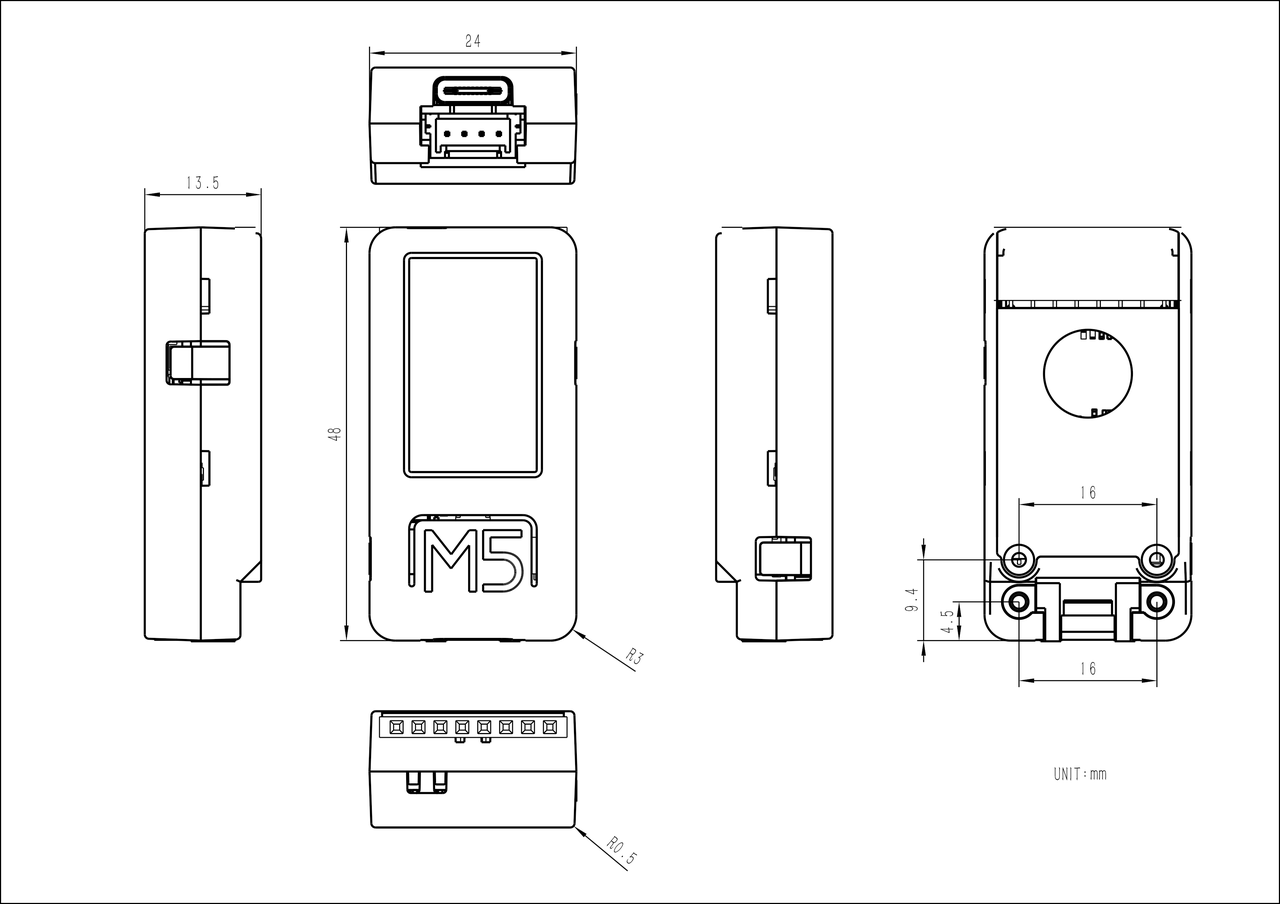
Unique Features
- Wearable design with support for RTC wake-up and low-power modes.
- Built-in UIFlow graphical programming, ideal for educational environments.
How it Works
- Power On/Off: The device can be powered on by pressing ‘BUTTON C’ for more than 2 seconds or triggered by an IRQ signal from the RTC. To turn it off, press ‘BUTTON C’ for more than 6 seconds or use a program to set the HOLD(GPIO4) pin to low.
Best Use Cases
- IoT Projects: Ideal for building connected devices, including smart home gadgets, sensors, and real-time monitoring systems.
- Educational Projects: Perfect for beginners in programming, offering an accessible way to learn and create applications with built-in sensors and components.
- Prototyping: Quickly test new ideas, with support for expansion modules to add more functionality as needed.
The M5StickC PLUS2 is a compact, feature-packed development board, designed to empower creators, whether they are building simple prototypes, learning to program, or creating advanced IoT solutions. Its flexibility, built-in features, and easy-to-use interface make it the perfect tool for rapid development in a variety of IoT and embedded applications.
What is the LILYGO T-Embed CC1101: Industrial-Grade Sub-GHz Communication Expert
Core Focus: Long-range, low-power wireless communication and RFID integration.
The LILYGO T-Embed CC1101 is a versatile development board designed for long-range, low-power wireless communication. Equipped with the CC1101 transceiver and additional wireless capabilities, it’s ideal for building IoT applications that require secure and reliable data transmission over long distances.
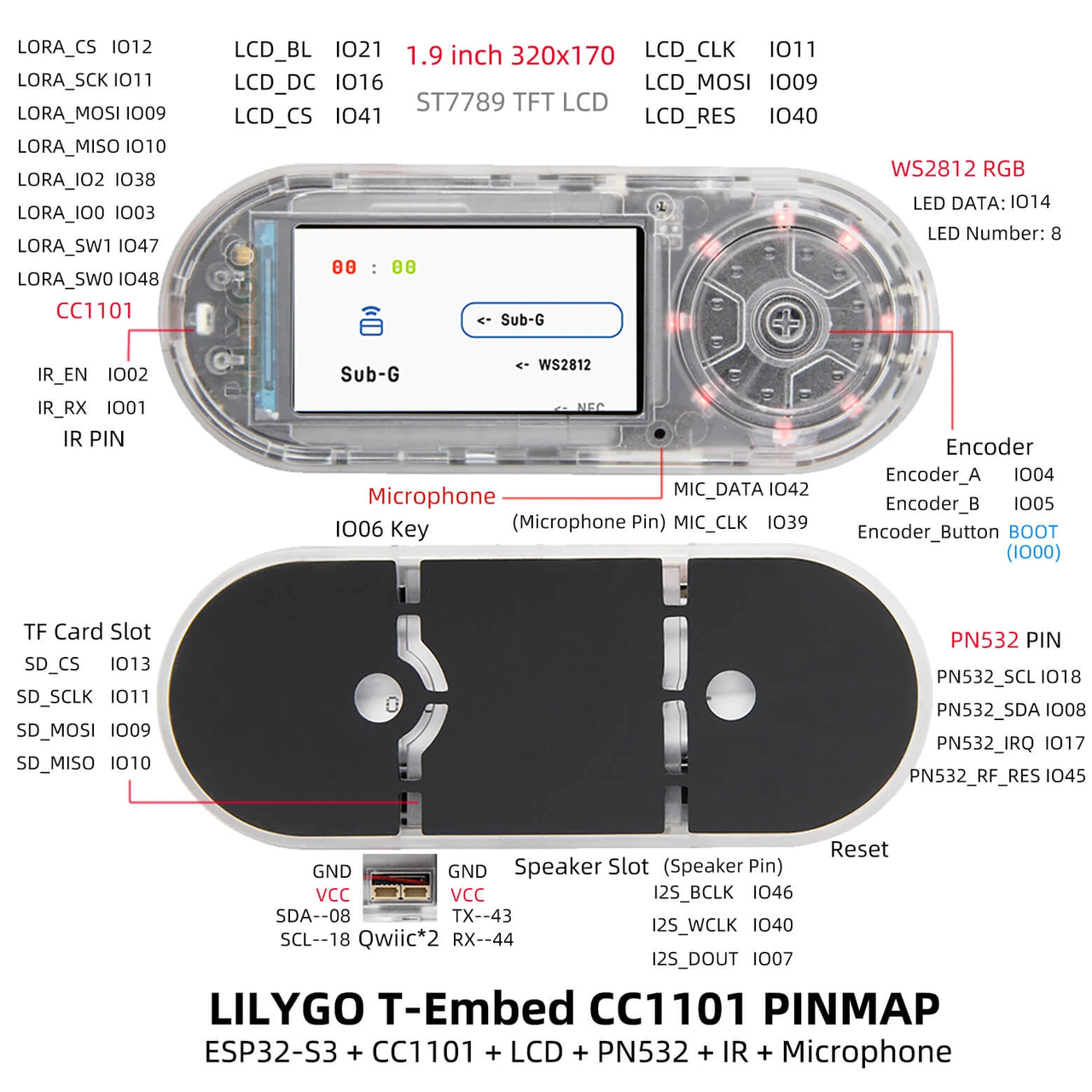
Hardware Highlights
- Main Chip: ESP32-S3-WROOM-1 (high-performance Wi-Fi/BLE).
- Wireless Modules: CC1101 Sub-GHz transceiver (300-928 MHz, 50-meter range) + PN532 NFC/RFID module (supports ISO 14443A/B).
- Display & Battery: High-resolution LCD (320×170), 1300mAh large battery.
- Industrial Design: Built-in WS2812 LED driver, supports external antenna expansion.
Key Features
- Sub-GHz Wireless Module
The T-Embed CC1101 integrates the CC1101 transceiver chip, supporting a wide range of frequency bands for versatile use:
- 300-348 MHz
- 387-464 MHz
- 779-928 MHz This flexibility makes the device suitable for various regions and communication needs, especially in long-range, low-power applications.
- RFID Support
The T-Embed CC1101 supports both low-frequency (LF) and high-frequency (HF) RFID applications:
- 125/134 KHz (BF)
- 13.56 MHz (HF) With this capability, the device is perfect for integrating RFID functionalities, such as access control and asset tracking.
- Integrated Radio Antenna
The board comes with a built-in radio antenna optimized for Sub-GHz frequencies. It ensures stable transmission and reception with a communication range of up to 50 meters, making it ideal for medium-range communication in IoT networks.
- Wireless Transceiver
In addition to the integrated Sub-GHz module, the T-Embed CC1101 supports external modules based on the CC1101 transceiver, offering even more versatility and customization for wireless communication projects.
- PN532 Compatibility
The T-Embed CC1101 is also compatible with the PN532 transceiver module, enabling contactless communication at 13.56 MHz. The PN532 supports various operating modes, including:
- ISO/IEC 14443A/MIFARE Reader/Writer
- FeliCa Reader/Writer
- ISO/IEC 14443B Reader/Writer
- MIFARE Classic 1K or 4K Card Emulation
- FeliCa Card Emulation
- ISO/IEC 18092 Peer-to-Peer Mode
Unique Features
- Customizable Sub-GHz frequency bands, ideal for regional industrial communications (e.g., 868 MHz in Europe, 915 MHz in North America).
- Open-source hardware design with available 3D-printed case files.
This makes it suitable for a wide range of RFID and NFC applications, including secure authentication, access control, and payment systems.
These features position the LILYGO T-Embed CC1101 as a powerful and flexible tool for building low-power, long-range wireless IoT solutions. Whether you are working on RFID applications, secure communication systems, or IoT networks, the T-Embed CC1101 offers the range, versatility, and ease of integration that you need.
Core Features Comparison
| Feature | Flipper Zero | BLEShark Nano | M5StickC PLUS2 | LILYGO T-Embed CC1101 |
| Core Purpose | Multi-protocol hardware debugging/security testing | BLE/Wi-Fi security testing and attacks | IoT development and rapid prototyping | Sub-GHz/RFID long-range communication and integration |
| Main Chip | STM32WB55 | ESP32-C3 | ESP32-PICO-V3-02 | ESP32-S3-WROOM-1 |
| Wireless Protocols Supported | Sub-GHz, RFID, NFC, IR | BLE, Wi-Fi | Wi-Fi, IR | Sub-GHz (CC1101), RFID/NFC (PN532) |
| Screen | 1.4 inch Monochrome LCD (128×64) | 0.66 inch OLED | 1.14 inch TFT (135×240) | LCD (320×170) |
| Battery Capacity | 2000mAh | 500mAh (≈4 hours) | 200mAh | 1300mAh |
| Development Friendliness | Open-source firmware, GPIO expansion supported | Closed-source firmware, supports custom scripts | Multi-platform support (Arduino/UIFlow) | Open-source hardware, supports Sub-GHz module expansion |
How to Choose? Scenario-based Recommendations
- I want to dive into hardware penetration, clone access cards/remote controls → Flipper Zero
- Why: Multi-protocol support + Open-source community ecosystem, ideal for hardcore hackers and security researchers. Perfect for exploring a variety of digital systems, from RFID to infrared and Sub-GHz protocols.
- I need to test Wi-Fi/BLE vulnerabilities, and my budget is limited → BLEShark Nano
- Why: Pre-configured attack scripts + extremely low price, beginner-friendly. A great choice for those looking to experiment with Wi-Fi and BLE security testing without breaking the bank.
- I want to quickly develop a smart home sensor → M5StickC PLUS2
- Why: Built-in sensors + graphical programming (UIFlow), ideal for students, makers, and IoT enthusiasts looking to create smart sensors or home automation systems with minimal coding.
- I’m designing an industrial-grade remote control system → LILYGO T-Embed CC1101
- Why: Sub-GHz long-range communication + extended battery life, perfect for professional developers creating robust, low-power, long-range communication systems for industrial or remote control applications.
Summary
These four devices each serve a specific purpose:
- Flipper Zero: A versatile hardware tool with broad protocol support, ideal for hardware hacking and security testing, but comes at a higher price.
- BLEShark Nano: Offers excellent value for money with a focus on wireless security testing, perfect for beginners on a budget.
- M5StickC PLUS2: A rapid prototyping tool for IoT development, offering built-in sensors and a user-friendly programming environment.
- LILYGO T-Embed CC1101: Specializes in industrial-grade communication and RFID integration, offering long-range capabilities and extended battery life.
